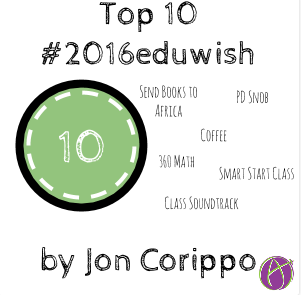I was given the book The Time of Our Lives by Peggy Noonan by a community member with a note that read, “May this book bring you inspiration during times of trial.” Remember, sometimes doing the right thing is hard!”
The gift and the note were timely. I had just been on the receiving end of some strong criticism. I was challenged in a public a meeting with statements of, “I don’t care what the law says,” and “I don’t care if there isn’t money in the budget. Make it happen,” and finally, “So, what are you saying? We’re not going to get our way?”
This reminded me of a popular cartoon in education circles:

While satirical, the cartoon has become well known among educators because it is often how we feel things are. It was certainly how I felt as those comments were called out.
But, back to the book…
As I read the introduction, I was struck by the opening quote, from Laurens van der Post “We live not only in our lives, but, whether we know it or not, also the life of our time.”
Noonan writes of being a pioneer. Initially, as a part of the “first great wave of women” to enter the field of journalism during the 1970s, then as a female speechwriter for the President during the Reagan years, and finally as one of the first internet columnists for the Wall St. Journal. She writes of a society looking for a “shock to the system” in the last presidential election.
As I read her words, I was struck by the “shock to the system,” the changes in education have brought over the past ten years to what once seemed very standard and therefore safe. There was a perception that grandparents, parents, and children would ultimately have pretty similar school experiences and stories. It may not have been exciting, but it was safe.
The past ten years have brought significant changes to the standards that are taught, to the methods used to teach them, to the technology that is still being experimented with, to keeping children safe and emotionally regulated, to the classroom and furniture design, to the way schools are funded or underfunded. Our children’s classroom and play experiences no longer look like those so fondly remembered by past generations. To some this is exciting; to others this is frightening. When we become afraid or nervous about something it is because we sense danger. What is unfamiliar or unknown can bring forth strong reactions.
It can be scary to not understand a once familiar system. It can be scary to not understand the changes. Statements such as, “I don’t care what the law says,” and “I don’t care if there isn’t money in the budget. Make it happen,” and “So, what are you saying? We’re not going to get our way?” can come from a genuine place of seeking what one believes is in the best interest. It can bring genuine frustration that while the concerns are heard, they are not changing a course of action.
Changes to our education system, the way students learn inside and outside of classrooms are going to continue. We will either adapt or we will risk becoming irrelevant. It does not feel safe to move forward into the unknown, but it is clear that we must nevertheless move in that direction.
Even with this knowledge, these statements have continued to make me uneasy.
In a homily, given by Father Kelly Vanderhey at Mission San Luis Obispo, he stated, “Freedom against the law is freedom against humanity.”
“Freedom against the law is freedom against humanity,”
The sermon continued with the reflection that there are seven really difficult years in everyone’s life. Seven years of pain that we all struggle through. Those seven years are from the ages of 13-19. These are the years during which we most struggle for freedom. We struggle for freedom from our parents and from rules. We seek independence. Yet, we are not ready to accept the full responsibility and accountability for those freedoms. We also seek to avoid the consequences for not following the rules.
It seems we may be in the teenage years of transformation in education. We seek independence from a system we know wasn’t working for children. We struggle with the transition. We want the freedom to explore and experiment to truly meet the educational, social, and emotional needs of every child. We have to be strong because it can feel easy to give in to the pressure that is loud.
While laws, rules, policies, and regulations can be boring, it turns out that these are what ultimately do keep us safe during times of change, struggle, and disagreement.
In her book, Noonan also quotes Pope John XXIII:
Do not walk through time without leaving worthy evidence of your passage.
Continue to lead during times of trial for it is when we are out of our comfort zones that the magic will happen.


 Five years ago this week, I posted the TedTalk,
Five years ago this week, I posted the TedTalk, 




 I’ve been blessed with an incredible PLN (Professional Learning Network). Through applications such as
I’ve been blessed with an incredible PLN (Professional Learning Network). Through applications such as 




